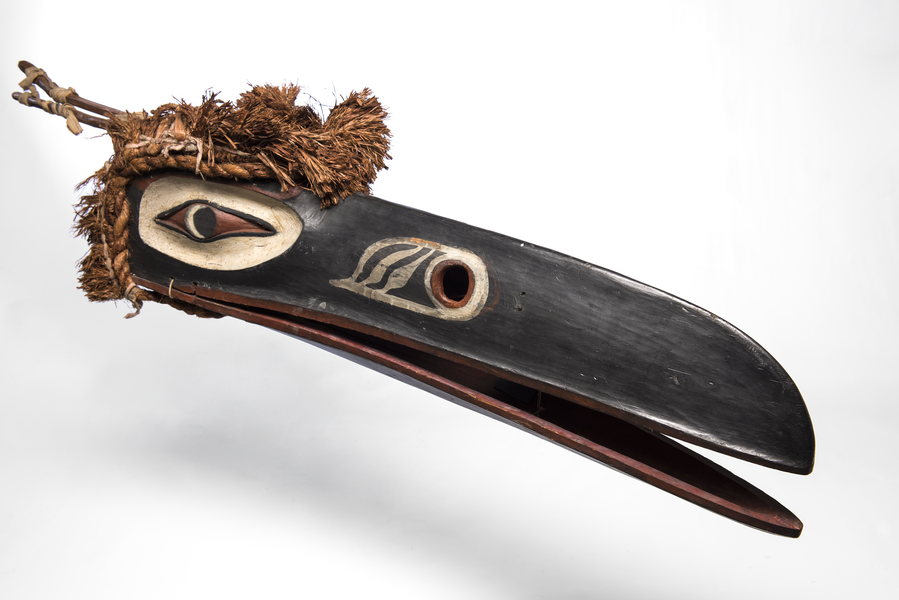At the top of this case is a large mask in the shape of a raven’s head with a large beak, facing right, well over a metre long. It is black with white eye surrounds and brown eyes with holes through which the wearer could see. There is hair on top of its head where a bird’s crest would be.
Below this mask to the left is a black taxidermied raven and to its right is a round woven basket, narrow at the base and widening to about 50 cm before closing in at the top with a lip surrounding the circular opening. Its decoration consists of angular designs, mostly geometric but with some four-legged animals.
Just below the basket, a little to the right, is a circular slice of jasperised wood in shades of red and orange, over a metre wide.
In front of the jasperised wood is the skeleton of a hairy armadillo in two parts: the skeleton, about 45 cm long, and the separate hard back.
Along the base of the display is another mask painted mostly in bright blue with a green nose, blood-red patterned cheeks, black eyebrows, all highlighted in white. The mask has long straggly black hair and a raven’s beak mouthpiece. Five more interchangeable mouthpieces in similar colour schemes surround the mask. These extra mouthpieces are all different: one has whiskers, one bared teeth, one open lips, one an open-mouthed smile and one a pair of long red fangs.
Further along the base are two Chimu pots, one has a rectangular base with flattish sides, a handle and a spout at one end. The other has a round base, with a handle and a vertical spout issuing from the handle. Next along the base is a Brazilian tortoise, with a yellowing label bearing the old scientific name Testudo tabulata. To its right is a pre-Columbian pottery bottle in the shape of a tortoise.

